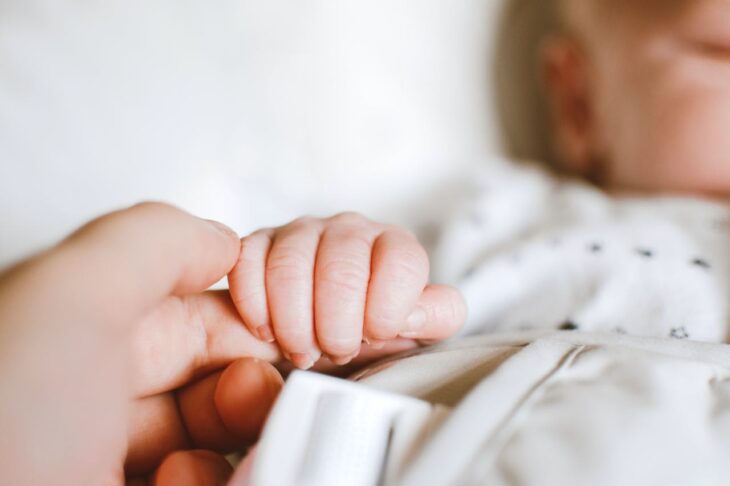
A functioning uterus supports and sustains pregnancy by protecting the developing fetus for the duration of your pregnancy. In order for things to go smoothly it’s necessary that you have a normal uterine cavity with a healthy lining. Uterine conditions that result in infertility vary from uterine factor infertility (UFI) due to the absence of the uterus from surgical removal (hysterectomy) to non-functioning uterus related to several different causes. Here, we take a look at five uterine conditions that commonly result in infertility.
- Uterine Fibroids and Polyps
Uterine fibroids and uterine polyps interfere with infertility in about 5%-10% of infertility cases. Fibroids and polyps are non-cancerous growths and may or may not cause symptoms depending on their location. Unusual cramping and heavy bleeding are two of the more common signs of uterine fibroids and polyps. Doctors believe there is a genetic connection to the development of polyps and fibroids.
When the polyps and fibroids are inside the uterine cavity or are more than six centimeters in size there’s a very good chance their presence leads to infertility. The impact of the fibroids on your fertility is higher if the following occurs:
- The fibroids alter the shape of your uterus which may prevent movement of the sperm and prevent fertilization.
- The change in the shape of your uterus caused by polyps and fibroids may prevent implantation.
- Fibroids may change the position of your cervix preventing sperm from getting to the egg.
- Fibroids and polyps that block the fallopian tubes prevent sperm from meeting the egg and may also prevent a fertilized egg from entering the uterus.
- Fibroids may impede blood flow to the uterus making the environment unsuitable for implantation.
Depending on the size and location of your polyps or fibroids, it may be possible for you to conceive. In most cases, however, you’ll require surgical removal of polyps and fibroids.
- Adenomyosis
Similar to endometriosis, adenomyosis occurs when endometrial-type tissue grows outside of the uterus on the muscle instead of the interior walls. This condition is far more prevalent in females approaching menopause as it responds to the hormonal fluctuations that occur. In post-menopausal females the condition typically goes away on its own.
Adenomyosis presents with symptoms similar to endometriosis. They are:
- Heavy periods that last longer than the average 3-7 days
- Severe, often debilitating menstrual cramps
- Chronic pain in pelvic region
- Pain during sex
Your doctor treats adenomyosis a number of ways but the most common forms of treatment are:
- Hormonal medications
- NSAID drugs
- Removal of the uterus (hysterectomy)
- Asherman’s Syndrome
The presence of scar tissue or adhesions in the uterus may indicate Asherman’s syndrome. Doctors commonly see Asherman’s in those females who’ve had previous uterine surgeries such as a D&C, removal of fibroids and polyps or in some females who’ve retained the placenta after birth of a baby. The adhesions and scar tissue make it difficult for the embryo to implant and Asherman’s syndrome is among the uterine conditions that commonly result in infertility.
The symptoms of Asherman’s include:
- Light or absent periods
- Menstrual-like pain at the time you expect your period but with no bleeding as the adhesions and scar tissue often prevent the flow of blood from your uterus.
- Loss of pregnancy
- Hydrosalpinx
Hydrosalpinx occurs when you experience a blocked fallopian tube. The tube may dilate and fill with fluid. The retained fluid spills into the uterus and prevents the lining from developing which prevents implantation. Often related to infection hydrosalpinx occurs most often in those who’ve had an STI such as chlamydia or gonorrhea or a ruptured appendix. In some cases, hydrosalpinx results from a build-up of endometriosis tissue.
Hydrosalpinx interferes with implantation as well as contributes to the opportunity for miscarriage. Other than an inability to conceive most females have no symptoms, however recurrent pain in the abdomen is sometimes present.
Treatment may involve removal of the affected fallopian tube. IVF is usually the best path to parenthood for those diagnosed with hydrosalpinx.
- Uterine Malformations
Some females suffer from uterine anomalies, which are thought to be congenital and often, though not always, result in infertility. Most females are unaware of any issues until they try to conceive. The most common of these uterine conditions that commonly result in infertility are:
- An arcuate uterus which occurs when the normally pear-shaped uterus has an indentation at the top. Typically, those with an arcuate uterus experience no issues in conception or pregnancy. It’s considered the mildest of uterine malformations.
- Doctors diagnose uterine didelphys when a female presents with two separate uteruses. Again, this condition doesn’t always result in infertility. As long as the uteruses are healthy pregnancy is possible. In fact, you may have recently heard about a case where a female conceived and became pregnant in both uteruses at the same time.
- A bicornuate or heart-shaped uterus may interfere with fertility and the ability to carry to term depending on the size of the uterus and amount of room for the fetal development.
- A diagnosis of a septate uterus occurs when there is a wall of tissue that separates the uterus into two sides. Because of this condition part of the uterus experiences a diminished blood flow and isn’t receptive to implantation. Without surgical removal of the tissue, implantation won’t occur. If it does, loss of pregnancy is common.
Don’t Give Up-We’re Here to Help
If you’ve had a hysterectomy or suffer from a condition that impacts the function of your uterus, there is hope. Assisted reproductive technology, gestational carrier, donor eggs and many other treatments help those who experience uterine conditions that commonly result in infertility. Please reach out to LA IVF today and together we’ll find the right treatment for you based on your diagnosis. At LA IVF, we are here for you.










